The bedrock of success for Fast-Moving Consumer Durables (FMCD) companies hinges on something rather simple yet profoundly critical – customer satisfaction.
Satisfied customers become loyal patrons, often singing the praises of a particular brand and returning for future purchases. On the other hand, dissatisfied customers can not only switch to competitors but also share their negative experiences, tarnishing a brand’s reputation. Therefore, from refrigerators to smartphones, washing machines to flat-screen TVs, ensuring each customer’s interaction results in a delightful experience is paramount.
Customer satisfaction in FMCD demands a dual-focus
FMCD companies must navigate around two crucial elements to maximize customer satisfaction:
-
- Warranty Management
- Net Promoter Score (NPS)
Warranty is a promise – a commitment to stand by the product’s quality and to support customers when things go amiss. As for the Net Promoter Score (NPS), it is the FMCD industry’s mirror, used to measure the level of loyalty customers have towards a brand.
In this article, we will explore the challenges and effective solutions regarding warranty management and NPS, which will empower FMCD businesses to take their customer satisfaction to newer heights.
Understanding the Challenge
The Crucial Role of Warranty Management

Warranty management has always played a pivotal role in businesses across various sectors. In essence, warranty management encompasses the entire spectrum of warranty-related activities. This includes creating warranty policies, tracking warranty claims, handling warranty extensions, providing replacements or repairs when needed, and ensuring customers have a clear understanding of what the warranty covers. It’s a multifaceted system dedicated to delivering customer satisfaction. Since FMCD products are an integral part of consumers’ daily lives, ensuring the reliability and quality of these products is of utmost importance.
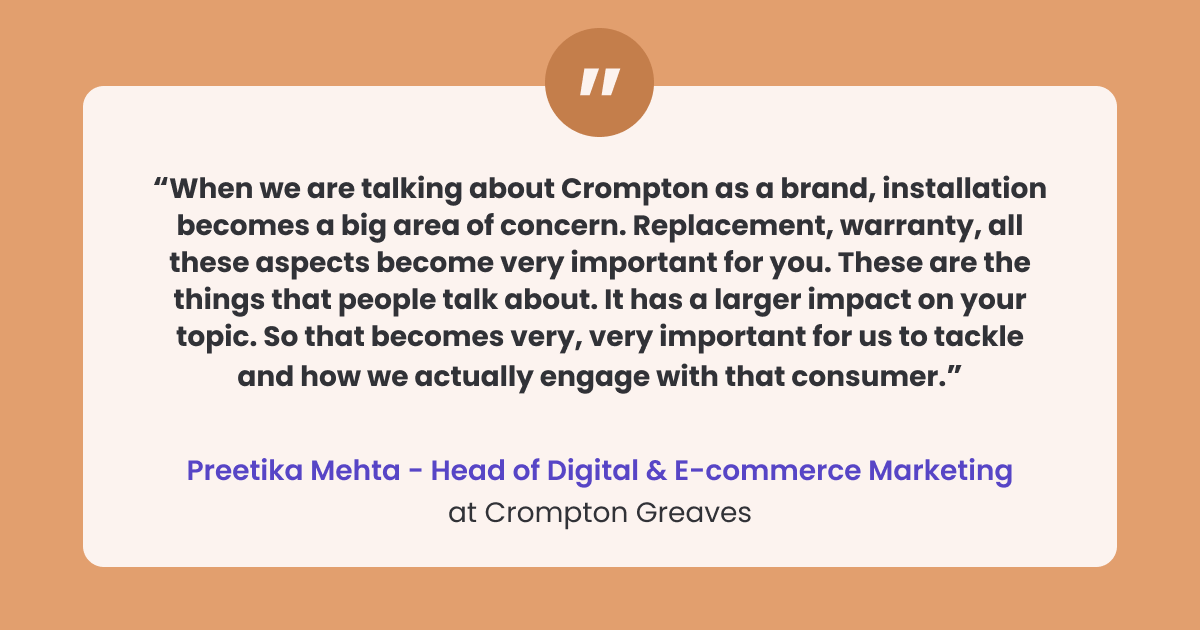
Today, it’s evident that the realm of this after-purchase service is not stagnant but, is rather, experiencing a remarkable ascent. The global warranty management system market was valued at $3.7 billion in 2022, and it’s projected to reach $16.1 billion by 2032. The market’s rapid growth, expected at a CAGR of 16.2% from 2023 to 2032, reflects the increasing need for efficient warranty management systems across various industries, especially in the FMCD sector.
Common Challenges
Amidst the growth, FMCD companies face a myriad of challenges related to warranty management:
Customer Confusion: Warranty terms are often filled with technical jargon and legalese, leaving customers baffled about what’s covered and what’s not. This confusion can lead to frustration and dissatisfaction when issues arise.
Data Discrepancies: Managing warranty data across multiple systems or with third-party service providers can lead to discrepancies. These inaccuracies can result in delayed or incorrect warranty services, further impacting customer satisfaction.
Effective Tracking And Management
![]()
Warranty Tracking and Management for FMCD is a process that helps manufacturers and retailers keep track of product warranties, ensure customer satisfaction, and manage claims efficiently and effectively.
Proper warranty management is crucial in this industry to maintain a positive customer experience and ensure compliance with consumer protection laws. Now, it’s possible to do this smoothly by seamless integration of the customer data and all product information (including minute yet important details like the start and end date of warranty) through CRM systems.
Below are some of the advantages of implementing an effective system:
Enhanced Customer Satisfaction: An efficient warranty management system leads to a 5-10% increase in customer satisfaction as it translates into quick, hassle-free services for customers. With a streamlined process, companies can provide prompt solutions to customer issues, significantly boosting customer satisfaction.
Improved Customer Loyalty: An overwhelming 95% of consumers affirm that customer service has a significant impact on their brand loyalty. Therefore, satisfying warranty claims promptly and efficiently is, without a doubt, one of the most efficient ways to build trust and loyalty.
Effective Post-Sales Service: A robust warranty management system goes beyond just handling claims. It enables FMCD companies to provide effective post-sales services, offering support and information to customers who need it.
Remarketing to Existing Customers, Boosting CLTV: A satisfied customer is more likely to consider additional purchases or product upgrades from the same brand. Efficient warranty management opens the door to remarketing opportunities. Companies can offer special promotions or extended warranties, thereby increasing Customer Lifetime Value (CLTV).
Automating Claim Journeys: Automation is a key feature of an efficient warranty management system. By automating warranty claim journeys, businesses ensure that claims are processed promptly, accurately, and without human errors. Moreover, automation brings about a substantial reduction in manual processes and costs, reducing them from $13 to just $1 per claim.
A bonus of implementing a tracking and managing system through seamless CRM is that you can utilize such detailed customer data to personalize customer journeys to keep them engaged and interested, in an otherwise boring post-purchase customer service market.
Actionable ways in which you can leverage FMCD warranty management to personalize customer journeys:
Customized Plans: Offer customers the option to choose warranty plans that best suit their needs. Some customers may prefer extended warranties, while others may opt for basic coverage. By providing choices, you tailor the warranty to their preferences and budgets.
Targeted Communication: Send personalized warranty-related communication, such as renewal reminders, claim status updates, and product care tips. Use the customer’s name and address them directly in these communications to make them feel valued.
Product Recommendations: Leverage customer data to suggest related or complementary products or accessories that might interest the customer. For example, if a customer purchased a refrigerator, you could recommend refrigerator filters or other kitchen appliances.
Exclusive Offers: Offer personalized discounts or offers on warranty extensions, accessories, or replacement parts. These offers can be based on the customer’s purchase history, preferences, or past warranty claims.
Customer Support: Train customer support representatives to address customers by name, reference their product purchase, and provide tailored assistance when handling warranty claims or inquiries.
Feedback and Surveys: Request feedback from customers after a warranty claim is resolved. This feedback can help you identify areas for improvement and enhance the customer experience.
Product Assistance: Provide personalized product care and maintenance tips based on the specific product the customer owns. This can help prolong the product’s lifespan and ensure the customer gets the most out of their purchase.
Bridging the Gap: A Single Source of Truth
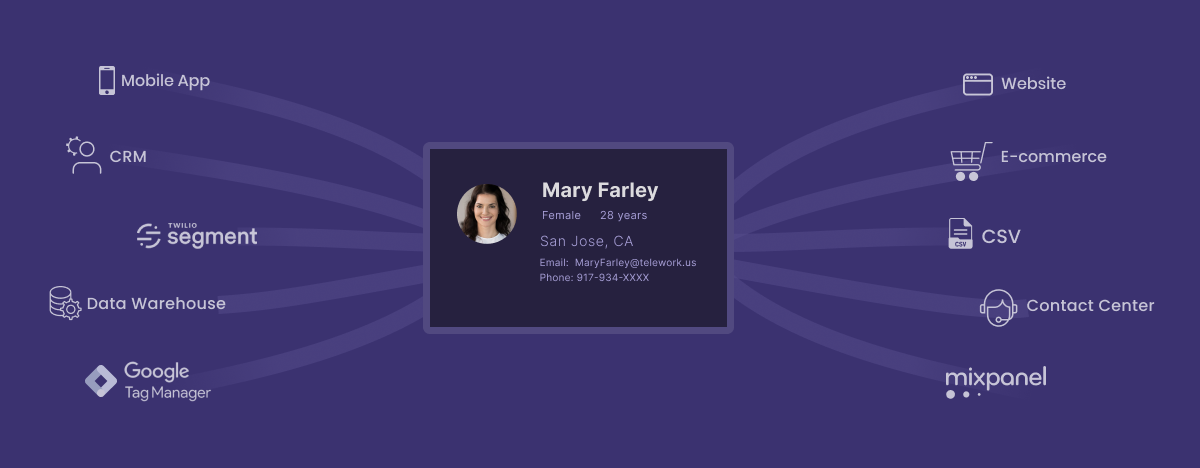
Imagine a scenario where all warranty-related information is housed in a single repository, accessible instantly and reliably. This unified pool of data serves as a single source of truth. Warranty terms, product details, and customer information are harmoniously aligned, streamlining processes and ensuring consistency across every customer interaction. Sounds like a game changer, right? Well, centralized customer data platforms are turning this scenario into reality.
A centralized customer data platform acts as a digital nerve center, integrating data from diverse sources into a unified, coherent view.
WebEngage with its cutting edge technology helps FMCD companies create intuitive warranty journeys. By seamlessly integrating centralized Customer Data Platforms (CDP), it enables businesses to design personalized, user-friendly warranty experiences.
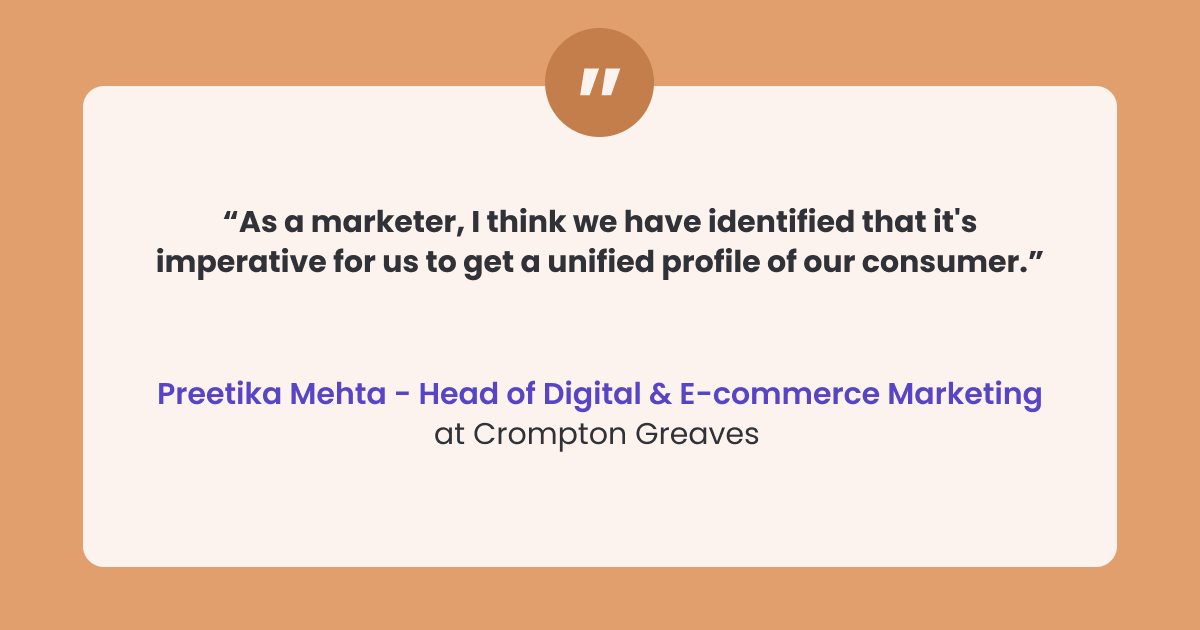
A good example to learn from in terms of the implementation of CDP would of course be Apple. Their approach to warranty management includes the following components:
1. User-Friendly Registration: Apple encourages customers to register their products through their Apple ID. This registration links the product to the customer’s account, simplifying the warranty tracking process.
2. Online Warranty Status: Apple provides an online platform where customers can easily check the warranty status of their devices by entering the product’s serial number or by logging into their Apple ID account.
3. Automated Notifications: Apple’s CRM system sends automated email notifications to customers as their warranty expiration date approaches. This proactive communication helps customers understand their coverage and encourages them to take advantage of it if needed.
4. Efficient Warranty Claims: Apple has a streamlined process for customers to initiate warranty claims. They can do this through the Apple Support website or by visiting an Apple Store. The process is user-friendly and often includes options for mail-in repairs or in-store service.
5. Data Analytics: Apple uses data from its CRM system to track common issues and identify trends. This information is used to enhance product quality and adjust warranty policies as needed.
6. Customer Feedback: Apple actively seeks customer feedback on their support experience, including warranty claims. They use this feedback to improve their warranty management and customer service processes continually.
7. Global Reach: Apple operates globally, and their warranty tracking and management processes are consistent across regions, providing a standardized experience for customers worldwide.
You see, there’s a reason why Apple has been able to maintain a customer retention rate of over 90% for the last three years consecutively. The key lies in their ability to use technology and data to provide a seamless and customer-focused warranty experience.
NPS: The Ultimate Key to Building a Loyal Customer Base
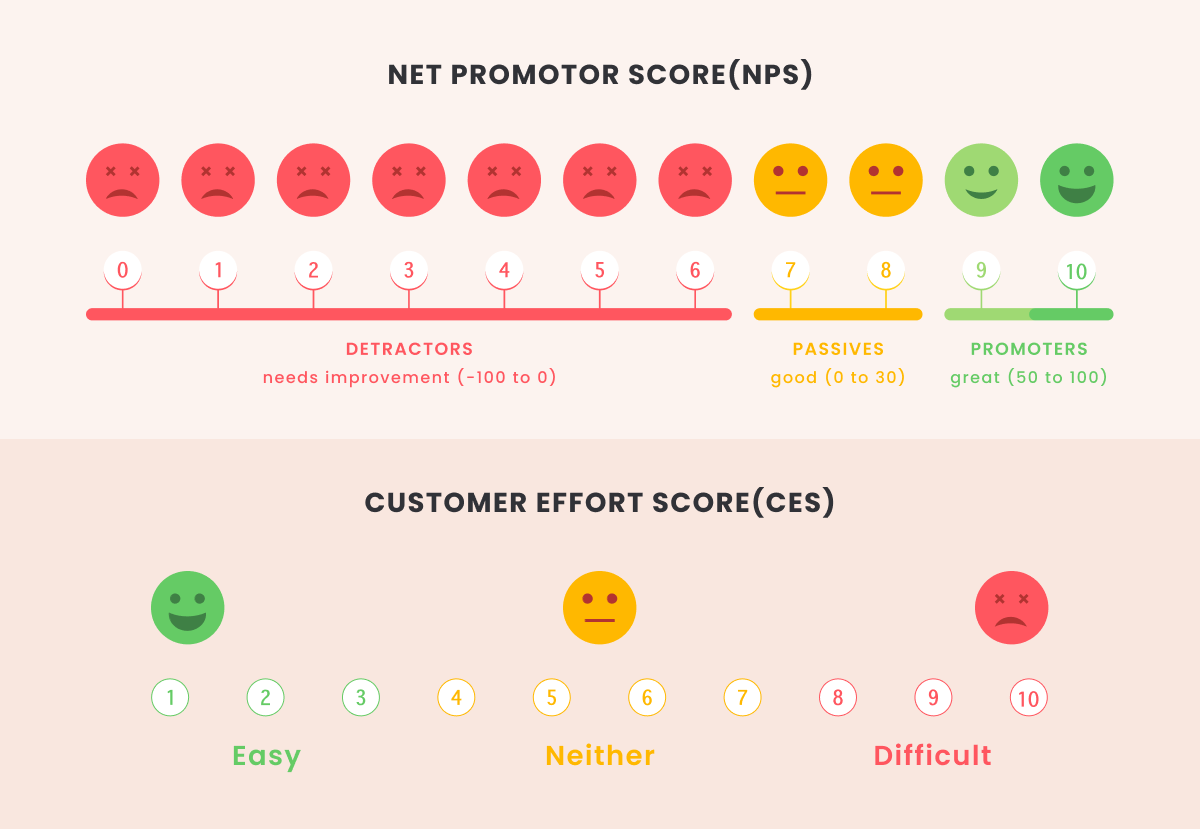
NPS, or Net Promoter Score, is a metric that quantifies customer loyalty based on their likelihood to recommend a product or service to others. High NPS scores often indicate a strong and satisfied customer base and it goes beyond mere customer feedback – it gauges the potential for brand advocacy.
It is a widely used metric to measure customer loyalty and satisfaction in various businesses and the calculation is the same for all yet benchmarking and acting upon the information may different from industry to industry.
Calculating NPS
The typical calculation is based on responses to a single question, fundamentally presented on a scale of 0 to 10, where 0 signifies extreme dissatisfaction and 10 represents absolute satisfaction.
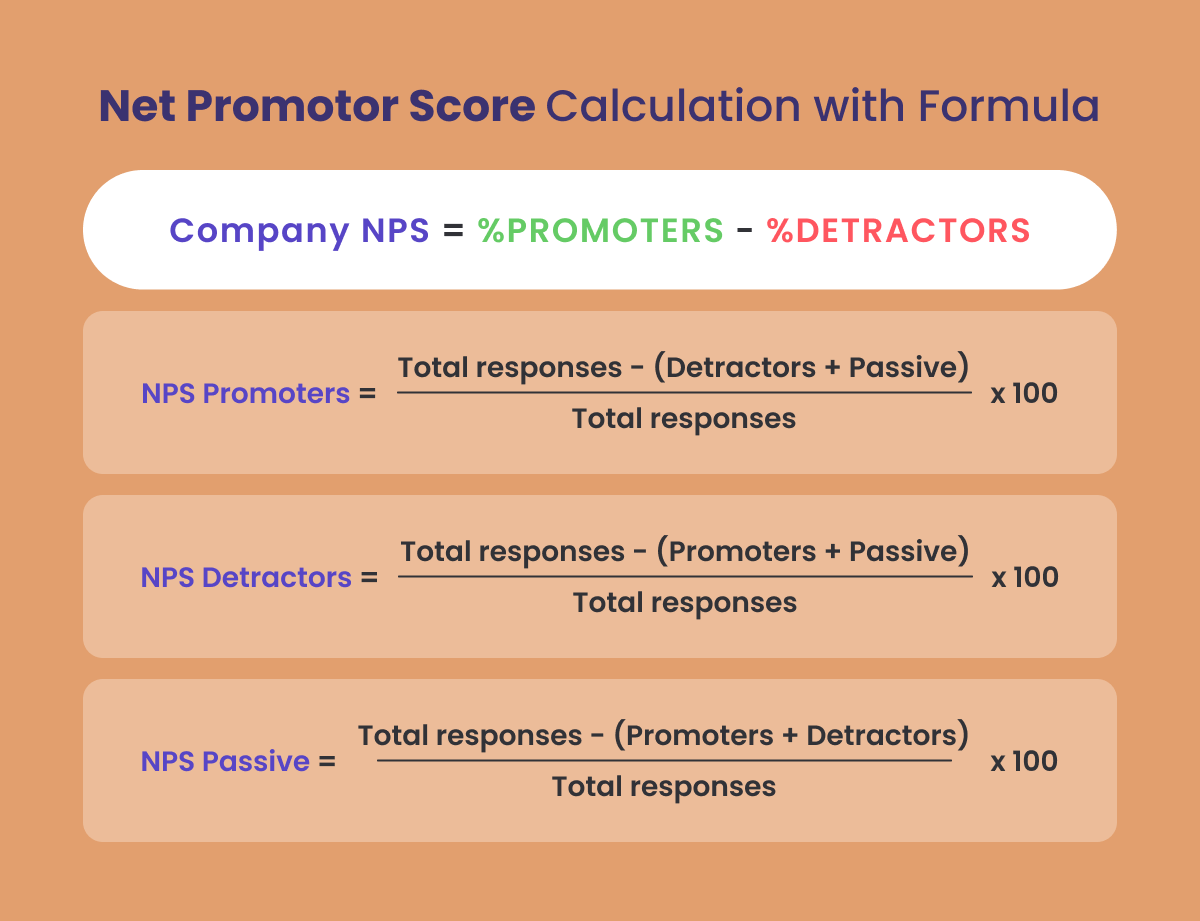
Why Measuring NPS is Important For Your FMCD Business
Imagine you run a company that makes Smart TVs. Here’s why measuring Net Promoter Score (NPS) is crucial for your business:
- Customer Happiness Check: Increase in no. of high scores = higher customer satisfaction with your Smart TVs.
- Spotting Trouble Early: Low scores = A potential problem such as issues with TVs software.
- Easy Feedback Understanding: NPS scores = A simple way to grasp feedback for your TV.
Follow these steps to calculate NPS for your FMCD business
-
- Survey Design:
Create a simple survey or questionnaire that includes the NPS question. The NPS question typically asks, “On a scale of 0-10, how likely are you to recommend our product to a friend or colleague?” - Distribute the Survey
Determine the best channels to distribute the survey to your customers. This can include email, SMS, in-app notifications, or even on your website. Consider using automated tools or services to streamline the process. - Gather Responses
Collect responses from customers and record their ratings on a scale of 0 to 10. Categorize responses into the three aforementioned groups: Promoters (score 9-10), Passives (score 7-8) and Detractors (score 0-6). - Calculate NPS
- Survey Design:
Subtract the percentage of Detractors from the percentage of Promoters to determine your Net Promoter Score. For example, if 25% of respondents are Promoters, and 15% are Detractors, the NPS would be (25 – 15) * 100 = 10.
- Interpret the NPS
NPS can range from -100 to +100, where a higher score indicates a more positive customer sentiment. Here’s how to interpret your NPS:
NPS above 0 indicates more Promoters than Detractors, suggesting positive word-of-mouth and potential for growth.
NPS around 0 suggests an equal number of Promoters and Detractors, indicating room for improvement.
NPS below 0 signifies more Detractors than Promoters, highlighting issues that need to be addressed to prevent negative impacts on your business. - Continuous Monitoring
NPS should be regularly monitored to track changes in customer sentiment over time. Consider conducting NPS surveys at specific intervals or after significant customer interactions, such as purchases, product launches, or support interactions. - Act on Feedback
Use NPS feedback to identify areas for improvement. Reach out to Detractors to understand their concerns and work on addressing their issues. Encourage Promoters to become advocates for your products and customer support services. - Benchmarking
Compare your business’s NPS with industry benchmarks to assess your performance relative to competitors. Benchmarking can provide valuable insights into your position in the market. For example, compare your NPS with that of brands known for their excellent customer service like Target, Apple, Kohl’s etc.
Key things to keep in mind to maintain a healthy Net Promoter Score for your FMCD brand
1. Impact of Distribution Intermediaries
Distribution intermediaries like delivery partners or installation experts, are extensions of the brand in the eyes of the customer. Their efficiency, professionalism, and ability to meet customer expectations profoundly impact the perception of your business.
2. The Domino Effect of Negative Experiences
When customers encounter issues such as delayed deliveries, poor installation, or unresponsive customer service, their dissatisfaction directly translates into lower scores. Negative experiences create a ripple effect, tarnishing the brand image and eroding the trust customers have in your company. Even if the core product or service is exceptional, a single unfavorable interaction with a third-party provider can overshadow it, leaving a lasting negative impression.
How to Address Low NPS Scores For Your FMCD Business
Addressing low Net Promoter Scores (NPS) involves a multifaceted approach that delves into understanding customer sentiments, enhancing communication, and creating rewarding experiences accordingly.
Picture this: You invest in a new AC, eagerly awaiting relief from the scorching heat. However, upon installation, you discover that the wrong model was delivered—a frustrating situation given that you just spent about 50k on the product. Disappointed, you decide to never recommend the brand to anyone else again unless the brand compensates for your loss.
Now, this is how a customer who could’ve turned into a ‘promoter’ turns into a ‘detractor.’ Had you as brand offered to send help or replacement the same day to make sure they don’t suffer any further in the heat, you could have retained a promoter.
This is where knowing your customer’s warranty information inside out deeply helps, and this data can easily be tracked and managed using WebEngage’s seamless CRM system.
So, in the context of above given AC example, addressing low NPS scores will help in the following way:
Understanding Detractors and Addressing Pain Points: Identify detractors by analyzing specific pain points, such as AC malfunctions during the summer.
Efficient Communication and Issue Resolution: Establish swift and professional communication channels. Ensure that customers facing heat-induced discomfort experience minimal wait times for effective solutions.
Customized NPS Journeys with WebEngage: Utilize WebEngage’s customer data platform to create tailored NPS journeys. This enhances the accuracy of feedback and allows for timely interventions. For example, tracking AC performance data can enable proactive interventions.
Personalized Experiences for Promoters: Appreciate loyal customers, for instance, promoters could receive exclusive offers, or early access to new cooling technology. This personalization strengthens their loyalty and advocacy.
Integration of Feedback Loops: Utilize tools like WebEngage’s feedback loops to get useful insights from customer feedback. This will help you make specific improvements, like tweaking AC features based on what customers suggest.
Conclusion
Enhancing customer satisfaction in the Fast-Moving Consumer Durables (FMCD) industry demands a dual focus on efficient warranty management and Net Promoter Score (NPS) optimization.
By addressing warranty management and NPS management challenges comprehensively, Fast-Moving Consumer Durables (FMCD) companies can streamline processes, reduce costs, and boost customer loyalty.
To date, WebEngage has empowered 800+ global brands in their revenue growth by killing data silos and instead, leveraging it to grow their businesses smoothly through boosting customer loyalty and beyond. To tap into this lucrative opportunity, take a demo with WebEngage and witness customer satisfaction for your product reach unimaginable heights.





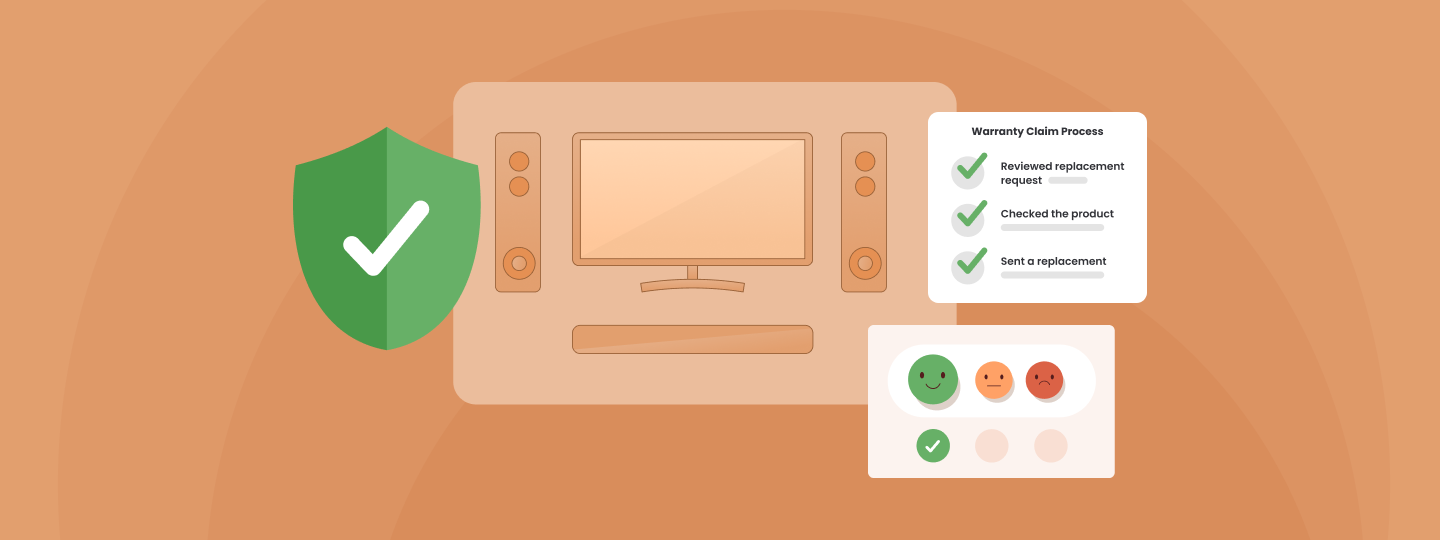


 Vanhishikha Bhargava
Vanhishikha Bhargava
 Inioluwa Ademuwagun
Inioluwa Ademuwagun
 Dev Iyer
Dev Iyer